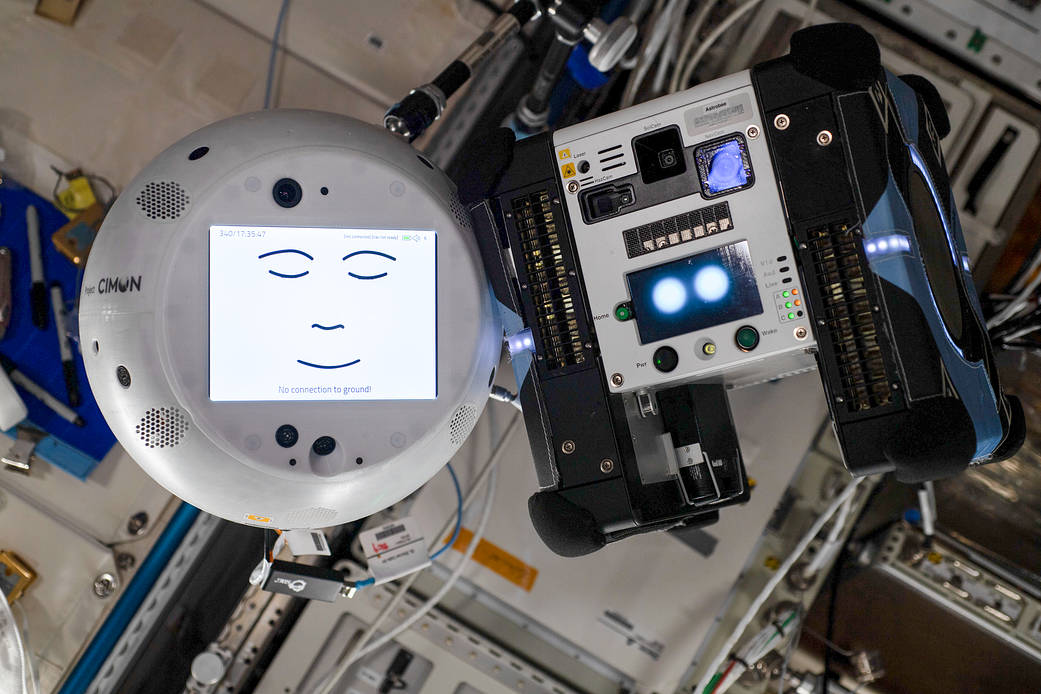The Astrobee and Project CIMON (Crew Interactive MObile companioN) robots had their first photo shoot in space after more than two years of working separately aboard the International Space Station. These free-floating helpers come from different countries and have unique functions, but they share a mission to assist astronauts, support station operations, and enable research that will take humans to the Moon and on to Mars.
Team Astrobee includes three identical robots differentiated by the colors on their robot shells – the blue one in this photo is named Bumble. These cube-shaped robots can operate autonomously or via remote control by operators on the ground to perform tasks such as taking inventory or monitoring the environment aboard the station. The Astrobees were funded by the agency’s Game Changing Development program and designed and built at NASA’s Ames Research Center in California’s Silicon Valley. Bumble first launched to the space station in 2019 with Honey, the yellow Astrobee. Their green sister, Queen, joined the crew aboard the station later that year.
Project CIMON, which was commissioned by the German Space Agency at DLR and developed by Airbus and IBM, is a project providing the first artificially intelligent assistant aboard the orbiting laboratory. This voice-controlled robot is designed to act as a hands-free database, computer, and camera to support research. The teams behind Project CIMON also hope to study the platform’s potential to help reduce astronaut stress associated with isolation or group dynamics by providing social assistance. The Project CIMON free flyer launched to the space station in June 2018.
Author: Arezu Sarvestani, NASA’s Ames Research Center
Image credit: NASA/Kayla Barron

























